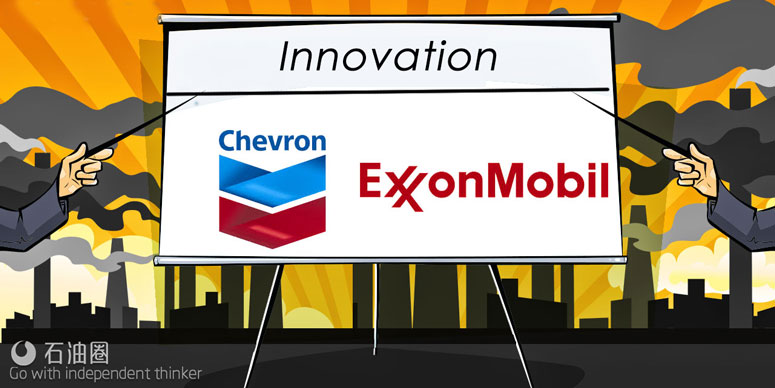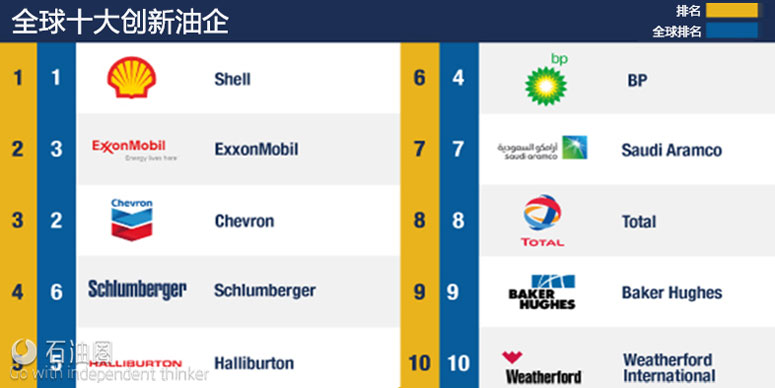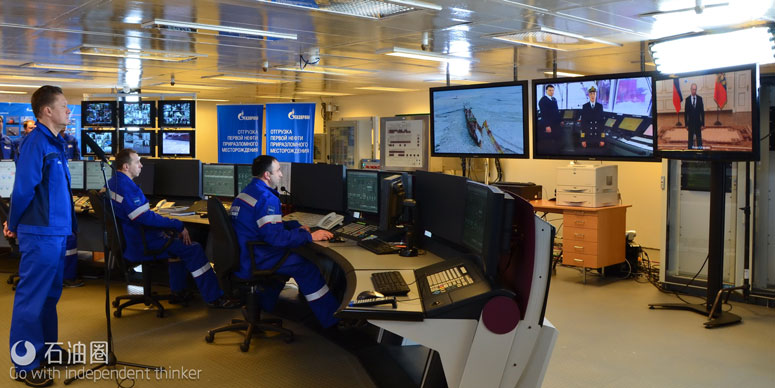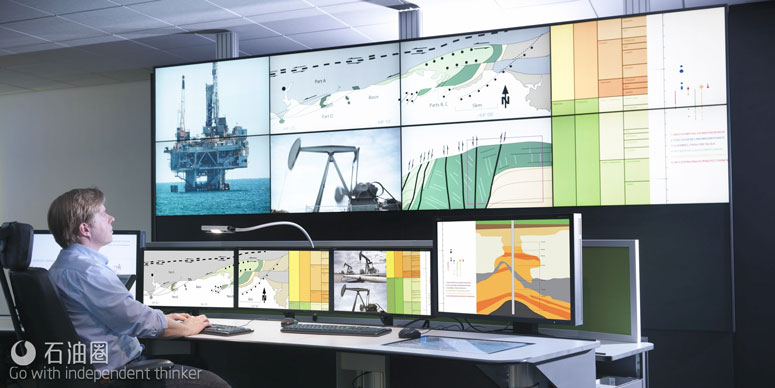Innovation will continue to play a role in the oil and gas industry as companies seek to remain competitive, not only in terms of cost and efficiency, but attracting the next generation of workers.
Rigzone’s inaugural Ideal Employer Survey highlights what our readers think are the most innovative companies in the oil and gas industry. Damon Vaccaro, a principal with Deloitte Consulting LLP, told Rigzone he is seeing more and more of the firm’s oil and gas clients focusing on their innovation practices and building the capability to innovate within their organization. Vaccaro also expects to see more digital type thinking and capabilities permeating the oil and gas sector.
In recent years, the oil and gas industry has been exploring technological innovation, such as digital technology, to gain more insight and derive more value from exploration and production. This discussion has continued through the downturn as companies look at how technological innovation can help companies better integrate their operations.
Damon Vaccaro
Principal, Deloitte Consulting LLP
Oil and gas companies are now looking at realizing efficiencies wherever they can, including the digitization of the paper-based process, Yanda Erlich, founder and CEO of Parsable, said in an interview with Rigzone. Parsable has been working with companies such as Schlumberger – also on Rigzone’s Ideal Employer Survey list of most innovative companies – to not only extend operational excellence across Schlumberger’s global business, but allow the company to capture the knowledge of retiring workers.
Royal Dutch Shell plc ranked among the top five most innovative companies. Innovation has led to Shell’s many industry firsts, from building the first oil tanker deemed safe enough to navigate the Suez Canal in 1892, to the opening of the world’s first commercial-scale carbon capture and storage project at an oil sands facility in Canada last year, Yuri Sebregts, chief technology officer at Shell, told Rigzone. Shell continues to push the technology envelope, responding to challenges such as ever increasing field complexity, new customer requirements for more sophisticated oil and gas products, and the changes in global energy markets.
“As the energy system transitions, innovation and technology will continue to play a critical role as we seek to meet the world’s growing energy needs with less environmental impact,” Sebregts said.
Chevron Corp. – also ranked as one of the top five most innovative companies in the survey – has thrived for over a century by continuously finding new technologies and approaches to reliable, affordable energy while improving environmental performance from production to consumer’s end-use emissions, Melissa Ritchie, Chevron spokesperson, told Rigzone in an email statement. Since 2007, Chevron has invested nearly $6 billion on research and development, and is involved in every step of the technology development chain. One example of Chevron’s work with innovative technology includes its use of drones for early detection of unanticipated emission releases.
Innovative Strategy, Structure, Work Practices Needed in Oil, Gas
Innovation is not only needed in oil and gas technology, but in the industry’s business practices, strategy and hiring practices. This innovation is needed as industry will seek to address is how to be more agile, more autonomous in real-time, and how to react to market conditions quicker, Vaccaro told Rigzone.
Going forward, companies will need to pay attention to weak signals, or signs that indicate a possible future direction for an industry, Vance Scott, Ernst & Young’s (EY) Americas Oil & Gas Transaction Advisory Services Leader, told Rigzone. Scott referenced E&Y’s three-box solution, in which most companies will focus 100 percent of their effort on the first box, or activities and things that have helped them succeed in the past. But this can create a blind spot for market changes that can occur. Technology is one factor that can change a business.
Business models, changing regulations, demographic changes and consumer preferences are other factors. These can start very slowly and gain momentum. Using a portion of company resources to look at emerging trends can better position a company for future success.
Innovation is also needed in the future underlying operational philosophy of oil and gas companies. Major oil and gas companies are still looking to pursue innovation in this area as they strive to become more competitive in plays such as shale.
“The success of major oil and gas companies is still built around large-scale, expensive capital projects. Successfully managing these projects – such as a field development project with a liquefied natural gas train or the construction of a deepwater floating, production, storage and offloading vessel – requires all the moving parts to work flawlessly,” Scott said.
While the stage-gate process works for large, offshore projects, shale operations present different risks. A shale well can be contained quickly if a problem arises, and the associated loss is not as big.
“Because of safety and risk management practices, oil and gas companies historically have deployed new technology slowly to ensure they were fully baked,” Erlich commented. “Instead of deploying technology across an entire organization, companies are now starting with an individual business unit to prove a technology’s value. This is viewed as the way to accelerate value from digital technology and collaboration efforts without increasing the actual or perceived risk in operations.”
Using technology to provide continuous feedback on worker performance is another innovation oil and gas companies are pursuing to retain workers. For example, a manager can leave a meeting and immediately rate someone on how they did, Rachel Everaard, a principal with EY’s People Advisory Services practice, told Rigzone. Oil and gas companies also are incorporating technologies that enable the focus on collaboration and growing presence of virtual work teams.
Rachel Everaard
Principal, Ernst & Young’s People Advisory Services Practice
Implementing technologies such as video conferencing not only is being done to accommodate millennials, but to be more judicious about cost and getting work done more efficiently. Innovative technology, such as simulation technology, also is being used to transfer the lessons learned by the older generation to the younger generation. Companies are turning to automation because of fewer available workers interested in working in remote locations, Everaard said.
Smaller, more nimble teams that are diverse in their thinking will be critical to companies’ future success, Vaccaro said.
“These teams should be multi-modal teams, which combine workers with different areas of expertise to identify ideas and conduct preliminary tests to see if they offer enough sufficient value to be scaled throughout an organization,” Vaccaro stated.
Innovation Needed in Oil, Gas Hiring, Work Practices
Oil and gas companies have been exploring innovative ways to hire and retain millennial workers, Everaard stated. One example is Exxon Mobil Corp.’s construction of a large campus north of Houston to serve as a central hub for its operations.
“The idea of a campus environment was to show that they were much more collaborative and a less hierarchical environment,” Everaard told Rigzone.
Companies are also offering community service programs that go beyond the typical United Way program and stress management and mindfulness programs.
“From the physical work environment to training, job assignment programs and rewards, innovative oil and gas companies are rebranding themselves to prepare for the competitive hiring market when oil and gas prices recover. Not only are companies having to ensure they can edge out industry competitors, but be able to compete with other industries in attracting millennials,” Everaard noted.
Scott told Rigzone sees the need for industry to be innovative in getting its message across on the benefits of oil and gas.
“The industry is losing the battle for the mind and soul of the American and global populations,” said Scott. Noting that medicines, mobility products, consumer goods, and technology and communication products wouldn’t exist without the underlying impact of oil and gas, “we would live a very meager existence if we moved hydrocarbons out of our lives.”


 石油圈
石油圈



